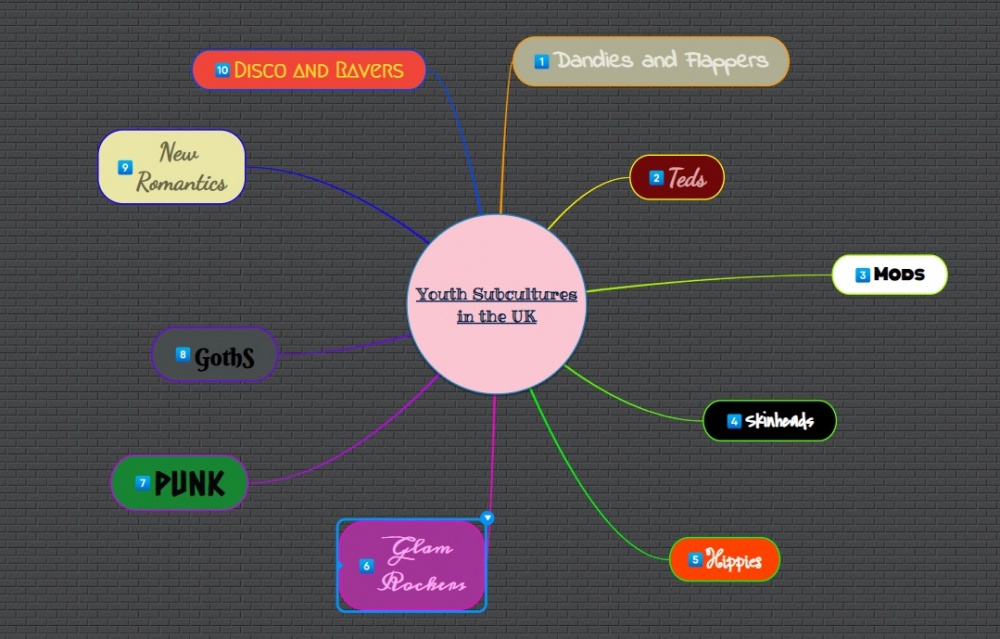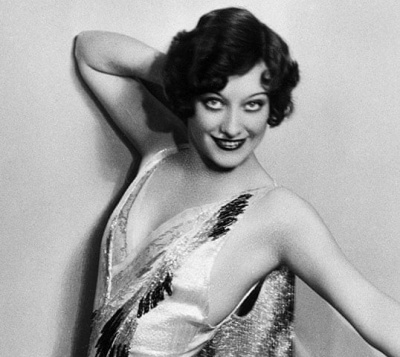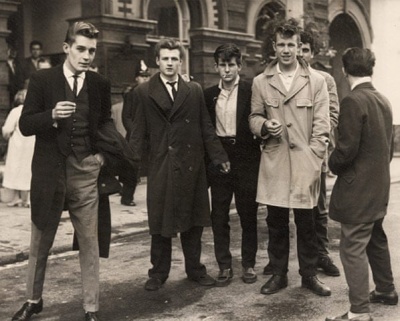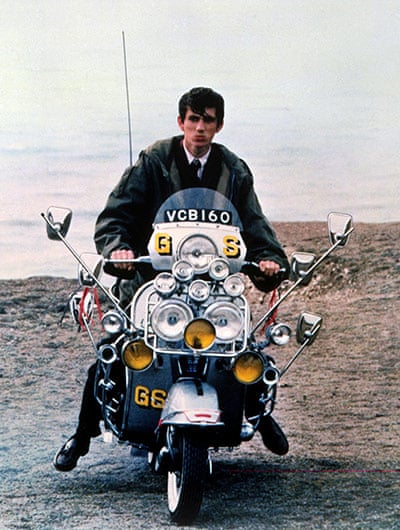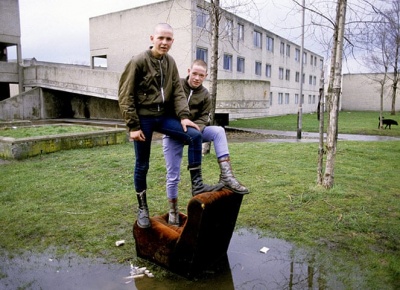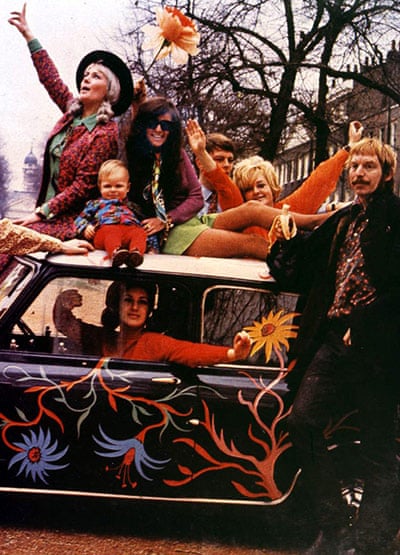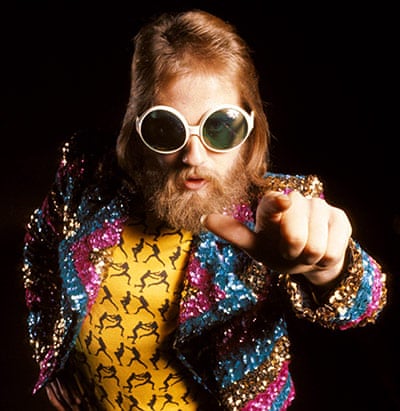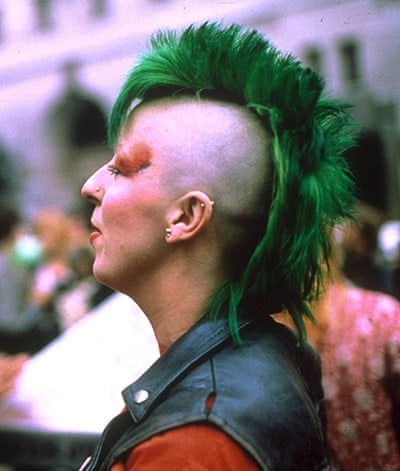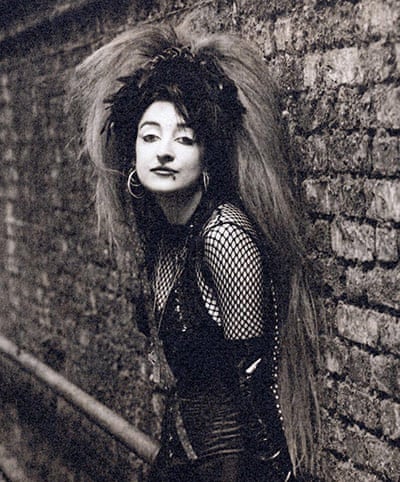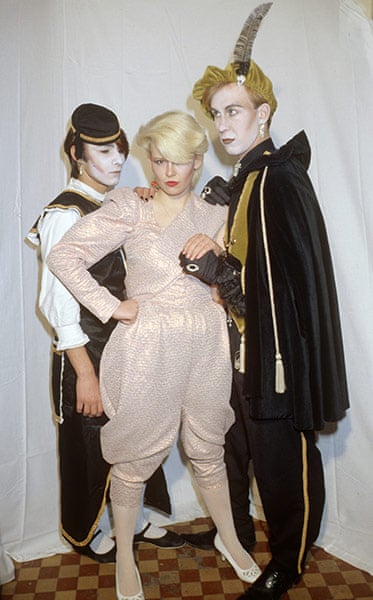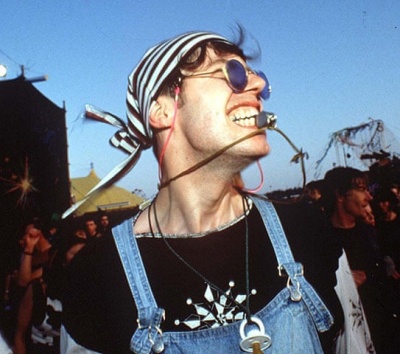Результаты исследований обучающихся в проекте British Fashion: различия между версиями
Dmnrmn (обсуждение | вклад) (→Полезные ресурсы) |
Dmnrmn (обсуждение | вклад) (→Результаты проведённого исследования) |
||
| (не показано 20 промежуточных версий этого же участника) | |||
| Строка 20: | Строка 20: | ||
==Цели исследования== | ==Цели исследования== | ||
| − | 1. | + | 1. To learn the main paths among youth subculture in the UK. |
| − | 2. | + | 2. To build a time feed for the history of British youth subcultures. |
| − | 3. | + | 3. To learn the role which youth subcultures play for the society. |
| − | 4. To build a mental map | + | 4. To build a mental map. |
==Результаты проведённого исследования== | ==Результаты проведённого исследования== | ||
| + | |||
| + | Our assumptions were successfully proven. | ||
| + | |||
| + | Firstly, let's pay attention to 10 main paths in youth subcultures of Great Britain. | ||
| + | |||
| + | |||
| + | Pay attention to our '''MIND MAP''' on [https://www.mindomo.com/ru/mindmap/3a05959fbbef4c72ab76a17b16d4f5b4 YOUTH SUBCULTURES OF UK] | ||
| + | |||
| + | [[Изображение:Mindmapdeminyouthsubcultures.jpg|1000px]] | ||
| + | |||
| + | |||
| + | |||
| + | '''1. [https://en.wikipedia.org/wiki/Dandy Dandies] and [https://en.wikipedia.org/wiki/Flapper flappers]''' | ||
| + | |||
| + | [[Изображение:Movie-Star-Joan-Crawford-001-demin.jpg|400px]] | ||
| + | |||
| + | It’s unclear whether fashion influenced music or vice versa in the 1920s, era of the “bright young things”, but clothing certainly became more risque at just the time when music upped the tempo and dancing became virtually acrobatic. The activities of choice for feisty females during the decade were public smoking, drinking and the freedom to indulge in casual relationships – along with a desire to look fashionably fabulous (think Sex and the City with cloche hats). For the male dandy, the demand was for all things exotic, in particular fashion with elaborate African, Oriental or Aztec references. | ||
| + | |||
| + | '''2. [https://en.wikipedia.org/wiki/Teddy_Boy Teds]''' | ||
| + | |||
| + | [[Изображение:Teddy-Boys-Teddy-Boys-In--002-demin.jpg|400px]] | ||
| + | |||
| + | Teddy boys adopted a look inspired by the prominent artists of the 1950s performing the new music sound – rock’n’roll. As a subculture, teddy boys had a reputation for being troublesome and violent, clashing frequently with authority and famously ripping out seats at concerts. Drape jackets, drainpipe trousers, skinny ties and creepers were compulsory attire. Teddy girls are not as well documented but were just as enthusiastic, sporting denim, Edwardian-inspired blazers and pencil skirts, which must have been a nightmare on the back of a greasy motorbike. | ||
| + | |||
| + | '''3. Mods''' | ||
| + | |||
| + | [[Изображение:Quadrophenia---1979-003-demin.jpg|400px]] | ||
| + | |||
| + | The modernist movement of the late 1950s and early 1960s was heavily influenced by Italian fashion. The increase in youth employment saw a rise in juvenile spending. The congregation of the like-minded at cafes and nightclubs fuelled an obsession with clean-cut fashions and black American R&B bands or British bands influenced by them, such as the Small Faces and the Who: the three-button, 14” bottom, mohair suit, fishtail parkas, Fred Perry polos, Hush Puppies, a Vespa with 20 or more mirrors and a girl in a twin set with capri pants and false lashes so long that they blew in the wind. | ||
| + | |||
| + | '''4. [https://en.wikipedia.org/wiki/Skinhead Skinheads]''' | ||
| + | |||
| + | [[Изображение:Young-skinheads-on-the-Du-004-demin.jpg|400px]] | ||
| + | |||
| + | By the mid-1960s, fashion was heavily under the influence of the ska music that filled the airwaves. Skinhead subculture was created from a fascination with the Jamaican rude boy style and evolved to adopt drainpipe denim, checkered shirts, white T-shirts, braces and cherry red DMs as a fashion identity. As a young lad going to watch Blackburn Rovers in the late 60s, I was in awe of these immaculately turned out – and somewhat menacing “skins”. Shame the look was adopted by rightwing racists in the 1970s but now the look has swung the other way as a “uniform” for some members of the gay community. | ||
| + | |||
| + | '''5. [https://en.wikipedia.org/wiki/Hippie Hippies]''' | ||
| + | |||
| + | [[Изображение:60s-Style-And-Hippies--005-demin.jpg|400px]] | ||
| + | |||
| + | The hippie movement of the 1960s based itself on the concept of not conforming to socially approved patterns of behaviour and indulging in a form of gentle anarchy. Nakedness was celebrated and shopping for pre-worn items at jumble sales and charity shops was commonplace with long-discarded military uniforms and ethnic dress mixed and matched to create a unique style. The music was heavily folk inspired, peppered with political messages promoting peace and love. The aesthetic created a platform on which social change could be promoted and the surreptitious agenda of conflict exposed for all to see. | ||
| + | |||
| + | '''6. [https://en.wikipedia.org/wiki/Glam_rock Glam rockers]''' | ||
| + | |||
| + | [[Изображение:Glam-Rocker-006-demin.jpg|400px]] | ||
| + | |||
| + | While the US was embracing R&B in the 1970s, the UK was taking part in a musical and visual experiment. Glam rock was a theatrical, bi-curious creation – 5” platforms and brightly coloured make-up and tunes that tested many a parent’s tolerance to their children’s tastes. | ||
| + | |||
| + | '''7. [https://en.wikipedia.org/wiki/Punk_subculture Punk]''' | ||
| + | |||
| + | [[Изображение:Punk-Rockers---1977-007-demin.jpg|400px]] | ||
| + | |||
| + | In the late 1970s, punk changed everything. The expensive creations of Vivienne Westwood and Malcolm McLaren spawned a DIY revolution that allowed a generation to express themselves through self-cut and dyed hair, artistically ripped T-shirts, jewellery made from safety pins and dog collars and charity shop trousers made into bondage strides. The photocopied, hand-folded record covers, posters produced on an art college Gestetner machine to promote bands made up of creative individuals who often hadn’t picked up an instrument in their lives were testament to an empowered youth. | ||
| + | |||
| + | '''8. [https://en.wikipedia.org/wiki/Goth_subculture Goths]''' | ||
| + | |||
| + | [[Изображение:Goth-street-fashion-008-demin.jpg|400px]] | ||
| + | |||
| + | Although the goth subculture has a diverse following, it is most closely associated with repressed teenage rebellion, outsider culture and a dark, alternative to punk. The two genres came together in the late 1970s with the Damned’s Dave Vanian and Bauhaus bringing sallow cheeks and black cloaks and howling to the stage. Thought of as a two-fingered renunciation to sparkly-eyed, perfect preppy kids, goths favoured eyeliner and a neo-Victorian style – all in black. Goth was never about being at the cutting edge of cool, but will always live on with youth as a way to say: “I don’t conform”. | ||
| + | |||
| + | '''9. New romantics''' | ||
| + | |||
| + | [[Изображение:Fantasy-Ball-at-the-Rainb-demin.jpg|400px]] | ||
| + | |||
| + | New romantics were a fashion marriage of the neoclassical and glam rock. Establishing itself in its own right at the end of the 1970s, the movement evolved throughout the 1980s. A generation of Bowie, Roxy and the original punk kids fell in love with Bowie’s Scary Monsters incarnation and designers such as Sue Clowes and Vivienne Westwood went to town with flouncy shirts with balloon sleeves and wild prints. London’s Blitz Club became synonymous with experimentation in androgynous, sexually liberal stylisation and new wave electronics. This “cult with no name” soon became the movement for cool kids. | ||
| + | |||
| + | '''10. Soulies, disco and ravers''' | ||
| + | |||
| + | [[Изображение:Raver-demin.jpg|400px]] | ||
| + | |||
| + | People enjoyed the different music styles: disco allowed them to be flamboyant; funk and rare groove to be underground; jazz funk to try complicated dance steps; and electro to be a bit weird. When acid house emerged, the subversive T-shirts and colourful footwear allowed the brand Red or Dead to flourish. By the 1990s, acid became rave and trainers replaced shoes and the pea-whistle gained new status. | ||
| + | |||
| + | ______ | ||
| + | |||
| + | '''THE ROLE OF YOUTH SUBCULTURES''' | ||
| + | |||
| + | The idea that there is a specific youth culture, sometimes expressed as 'spectacular' youth subcultures, has been understood in several ways. There has been debate as to how useful the idea is, given the extent to which young people's values are similar to their parents, and given the differences that exist between young people. The observable differences in culture may be due to the fact that young people occupy different places in society and inhabit different institutions from their parents, so cultures are expressed differently. It may also be that youth as a social structure performs important integrative functions for the society as a whole. These may include the integration of social change.Also, we need to understand the extent to which these differences are a function of generation rather than age, a product of the different times in which people grew up. Again, however, we need to be cautious in generalising about the cultures of a particular generation. Mostly generations do not share a single culture.The more visible expressions of youth cultures in subcultural styles have been understood in a number of ways. They are an attempt to win space from the dominant culture. They are an attempt to symbolically express and resolve the contradictions that they experience between different cultural and ideological forces: between dominant ideologies, parent ideologies, the ideologies that arise from their own daily lives.Cultural forms and artefacts that originate with young people are also taken over by the vast youth culture industry, constantly on the lookout for the 'new sound' or the 'new look'. These styles are then sold to other young people for whom they may carry different meanings. Styles, both appropriated and invented, are used by young people in the process of self-definition, self-invention and self-formation as youth.In all this, we need to be aware that most young people are entirely conventional, and do not participate to any significant degree in sub cultural groups. They may 'play' with styles and looks, but rarely develop a consistent sub cultural identity. | ||
| + | |||
| + | Some of the youth subcultures can create a platform for the development of negative tendencies in the youth, others probably have a positive social value. Anyway, subculture is hardly accepted by society. For example, a probability of passing the bill on the new state policy in the sphere of spiritual and moral education of children. It was assumed such an item as the fight against youth subcultures. But would it help? Let us examine in some detail. First, what was a reaction of teenagers themselves? | ||
| + | |||
| + | “They do not understand what gothic is. They really think we are someone crazy with suicidal tendencies. Gothic is a state of mind, and appearance is one of the ways of expression yourself.” “If you forbid it, so give us something like that which is interesting, where you can show the true you!” | ||
| + | |||
| + | It is important to understand that subculture is not like a sect, which completely reprogram people. Yes, every subculture has its own worldview, perhaps not the most ideal, but it is not a subculture that forms it, but the people who are involved. | ||
| + | |||
| + | With regard to crime and suicide – it is an authentic fact. But remember in linguistics such a thing as "broad generalization" when the signs and the features inherent to any individual member of an ethnic or cultural group are transferred to all its carriers. | ||
| + | |||
| + | It is not necessary to believe this, while it is very easy to prove that this is not true. If two of ten thousand members committed suicide, then the cause is not a subculture but the relations with other people. Otherwise, why the rest are alive? | ||
| + | |||
| + | Many young people assume that but for the subculture, they were just themselves. Almost each is soberly aware what he wants to get from belonging to a subculture, and why he needs it all. This is the direct road to the individual. | ||
| + | |||
| + | Really good step would be a greater control over television production. If you gradually remove the cause, its consequence will soon disappear. But if you delete a consequence, the cause will continue to operate. And until it is late, we should seriously think about it. The only way to avoid war with teenagers is to find a decent alternative to such subcultures. As you can see, the problem of subcultures is extremely significant. That is why we cannot ignore it, pretending that nothing is happening. | ||
| + | |||
| + | Thus, youth subculture play a very important role for the society. | ||
==Вывод== | ==Вывод== | ||
| + | All the aims were achieved. | ||
| + | |||
| + | 1. We have learned different youth subcultures in the UK: | ||
| + | |||
| + | ''- dandies and flappers'' | ||
| + | |||
| + | ''- teds'' | ||
| + | |||
| + | ''- mods'' | ||
| + | |||
| + | ''- skinheads'' | ||
| + | |||
| + | ''- hippies'' | ||
| + | |||
| + | ''- glam rockers'' | ||
| + | |||
| + | ''- punk'' | ||
| + | |||
| + | ''- goths'' | ||
| + | |||
| + | ''- new romantics'' | ||
| + | |||
| + | ''- disco and ravers'' | ||
| + | |||
| + | 2. We have build a time feed to show the history of youth subcultures in the UK. | ||
| + | |||
| + | 3. We have learned that youth subculture plays an enormous role for the society. It moves the humanity forward, helps us evolve, stay true to our free spirit. Youth subcultures change the world, make it a better place full of love, freedom, tolerance and acceptance. | ||
| + | |||
| + | 4. We have built a mental map to digitalise the results of our research. | ||
==Полезные ресурсы== | ==Полезные ресурсы== | ||
Текущая версия на 18:04, 3 ноября 2020
Содержание
Авторы и участники проекта
Участники группы "Исследователи"
Тема исследования группы
YOUTH SUBCULTURE
Проблемный вопрос (вопрос для исследования)
What role does the youth subculture play in society?
Гипотеза исследования
We assume that youth subcultures play a very important role in society.
We assume that British youth subcultures have left a significant trace in the world of fashion.
Цели исследования
1. To learn the main paths among youth subculture in the UK.
2. To build a time feed for the history of British youth subcultures.
3. To learn the role which youth subcultures play for the society.
4. To build a mental map.
Результаты проведённого исследования
Our assumptions were successfully proven.
Firstly, let's pay attention to 10 main paths in youth subcultures of Great Britain.
Pay attention to our MIND MAP on YOUTH SUBCULTURES OF UK
It’s unclear whether fashion influenced music or vice versa in the 1920s, era of the “bright young things”, but clothing certainly became more risque at just the time when music upped the tempo and dancing became virtually acrobatic. The activities of choice for feisty females during the decade were public smoking, drinking and the freedom to indulge in casual relationships – along with a desire to look fashionably fabulous (think Sex and the City with cloche hats). For the male dandy, the demand was for all things exotic, in particular fashion with elaborate African, Oriental or Aztec references.
2. Teds
Teddy boys adopted a look inspired by the prominent artists of the 1950s performing the new music sound – rock’n’roll. As a subculture, teddy boys had a reputation for being troublesome and violent, clashing frequently with authority and famously ripping out seats at concerts. Drape jackets, drainpipe trousers, skinny ties and creepers were compulsory attire. Teddy girls are not as well documented but were just as enthusiastic, sporting denim, Edwardian-inspired blazers and pencil skirts, which must have been a nightmare on the back of a greasy motorbike.
3. Mods
The modernist movement of the late 1950s and early 1960s was heavily influenced by Italian fashion. The increase in youth employment saw a rise in juvenile spending. The congregation of the like-minded at cafes and nightclubs fuelled an obsession with clean-cut fashions and black American R&B bands or British bands influenced by them, such as the Small Faces and the Who: the three-button, 14” bottom, mohair suit, fishtail parkas, Fred Perry polos, Hush Puppies, a Vespa with 20 or more mirrors and a girl in a twin set with capri pants and false lashes so long that they blew in the wind.
4. Skinheads
By the mid-1960s, fashion was heavily under the influence of the ska music that filled the airwaves. Skinhead subculture was created from a fascination with the Jamaican rude boy style and evolved to adopt drainpipe denim, checkered shirts, white T-shirts, braces and cherry red DMs as a fashion identity. As a young lad going to watch Blackburn Rovers in the late 60s, I was in awe of these immaculately turned out – and somewhat menacing “skins”. Shame the look was adopted by rightwing racists in the 1970s but now the look has swung the other way as a “uniform” for some members of the gay community.
5. Hippies
The hippie movement of the 1960s based itself on the concept of not conforming to socially approved patterns of behaviour and indulging in a form of gentle anarchy. Nakedness was celebrated and shopping for pre-worn items at jumble sales and charity shops was commonplace with long-discarded military uniforms and ethnic dress mixed and matched to create a unique style. The music was heavily folk inspired, peppered with political messages promoting peace and love. The aesthetic created a platform on which social change could be promoted and the surreptitious agenda of conflict exposed for all to see.
6. Glam rockers
While the US was embracing R&B in the 1970s, the UK was taking part in a musical and visual experiment. Glam rock was a theatrical, bi-curious creation – 5” platforms and brightly coloured make-up and tunes that tested many a parent’s tolerance to their children’s tastes.
7. Punk
In the late 1970s, punk changed everything. The expensive creations of Vivienne Westwood and Malcolm McLaren spawned a DIY revolution that allowed a generation to express themselves through self-cut and dyed hair, artistically ripped T-shirts, jewellery made from safety pins and dog collars and charity shop trousers made into bondage strides. The photocopied, hand-folded record covers, posters produced on an art college Gestetner machine to promote bands made up of creative individuals who often hadn’t picked up an instrument in their lives were testament to an empowered youth.
8. Goths
Although the goth subculture has a diverse following, it is most closely associated with repressed teenage rebellion, outsider culture and a dark, alternative to punk. The two genres came together in the late 1970s with the Damned’s Dave Vanian and Bauhaus bringing sallow cheeks and black cloaks and howling to the stage. Thought of as a two-fingered renunciation to sparkly-eyed, perfect preppy kids, goths favoured eyeliner and a neo-Victorian style – all in black. Goth was never about being at the cutting edge of cool, but will always live on with youth as a way to say: “I don’t conform”.
9. New romantics
New romantics were a fashion marriage of the neoclassical and glam rock. Establishing itself in its own right at the end of the 1970s, the movement evolved throughout the 1980s. A generation of Bowie, Roxy and the original punk kids fell in love with Bowie’s Scary Monsters incarnation and designers such as Sue Clowes and Vivienne Westwood went to town with flouncy shirts with balloon sleeves and wild prints. London’s Blitz Club became synonymous with experimentation in androgynous, sexually liberal stylisation and new wave electronics. This “cult with no name” soon became the movement for cool kids.
10. Soulies, disco and ravers
People enjoyed the different music styles: disco allowed them to be flamboyant; funk and rare groove to be underground; jazz funk to try complicated dance steps; and electro to be a bit weird. When acid house emerged, the subversive T-shirts and colourful footwear allowed the brand Red or Dead to flourish. By the 1990s, acid became rave and trainers replaced shoes and the pea-whistle gained new status.
______
THE ROLE OF YOUTH SUBCULTURES
The idea that there is a specific youth culture, sometimes expressed as 'spectacular' youth subcultures, has been understood in several ways. There has been debate as to how useful the idea is, given the extent to which young people's values are similar to their parents, and given the differences that exist between young people. The observable differences in culture may be due to the fact that young people occupy different places in society and inhabit different institutions from their parents, so cultures are expressed differently. It may also be that youth as a social structure performs important integrative functions for the society as a whole. These may include the integration of social change.Also, we need to understand the extent to which these differences are a function of generation rather than age, a product of the different times in which people grew up. Again, however, we need to be cautious in generalising about the cultures of a particular generation. Mostly generations do not share a single culture.The more visible expressions of youth cultures in subcultural styles have been understood in a number of ways. They are an attempt to win space from the dominant culture. They are an attempt to symbolically express and resolve the contradictions that they experience between different cultural and ideological forces: between dominant ideologies, parent ideologies, the ideologies that arise from their own daily lives.Cultural forms and artefacts that originate with young people are also taken over by the vast youth culture industry, constantly on the lookout for the 'new sound' or the 'new look'. These styles are then sold to other young people for whom they may carry different meanings. Styles, both appropriated and invented, are used by young people in the process of self-definition, self-invention and self-formation as youth.In all this, we need to be aware that most young people are entirely conventional, and do not participate to any significant degree in sub cultural groups. They may 'play' with styles and looks, but rarely develop a consistent sub cultural identity.
Some of the youth subcultures can create a platform for the development of negative tendencies in the youth, others probably have a positive social value. Anyway, subculture is hardly accepted by society. For example, a probability of passing the bill on the new state policy in the sphere of spiritual and moral education of children. It was assumed such an item as the fight against youth subcultures. But would it help? Let us examine in some detail. First, what was a reaction of teenagers themselves?
“They do not understand what gothic is. They really think we are someone crazy with suicidal tendencies. Gothic is a state of mind, and appearance is one of the ways of expression yourself.” “If you forbid it, so give us something like that which is interesting, where you can show the true you!”
It is important to understand that subculture is not like a sect, which completely reprogram people. Yes, every subculture has its own worldview, perhaps not the most ideal, but it is not a subculture that forms it, but the people who are involved.
With regard to crime and suicide – it is an authentic fact. But remember in linguistics such a thing as "broad generalization" when the signs and the features inherent to any individual member of an ethnic or cultural group are transferred to all its carriers.
It is not necessary to believe this, while it is very easy to prove that this is not true. If two of ten thousand members committed suicide, then the cause is not a subculture but the relations with other people. Otherwise, why the rest are alive?
Many young people assume that but for the subculture, they were just themselves. Almost each is soberly aware what he wants to get from belonging to a subculture, and why he needs it all. This is the direct road to the individual.
Really good step would be a greater control over television production. If you gradually remove the cause, its consequence will soon disappear. But if you delete a consequence, the cause will continue to operate. And until it is late, we should seriously think about it. The only way to avoid war with teenagers is to find a decent alternative to such subcultures. As you can see, the problem of subcultures is extremely significant. That is why we cannot ignore it, pretending that nothing is happening.
Thus, youth subculture play a very important role for the society.
Вывод
All the aims were achieved.
1. We have learned different youth subcultures in the UK:
- dandies and flappers
- teds
- mods
- skinheads
- hippies
- glam rockers
- punk
- goths
- new romantics
- disco and ravers
2. We have build a time feed to show the history of youth subcultures in the UK.
3. We have learned that youth subculture plays an enormous role for the society. It moves the humanity forward, helps us evolve, stay true to our free spirit. Youth subcultures change the world, make it a better place full of love, freedom, tolerance and acceptance.
4. We have built a mental map to digitalise the results of our research.
Полезные ресурсы
The 10 best British youth cultures
A brief guide to the British subcultures
The difference between Russians and Brits
